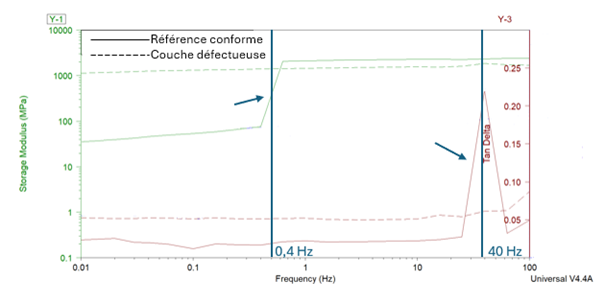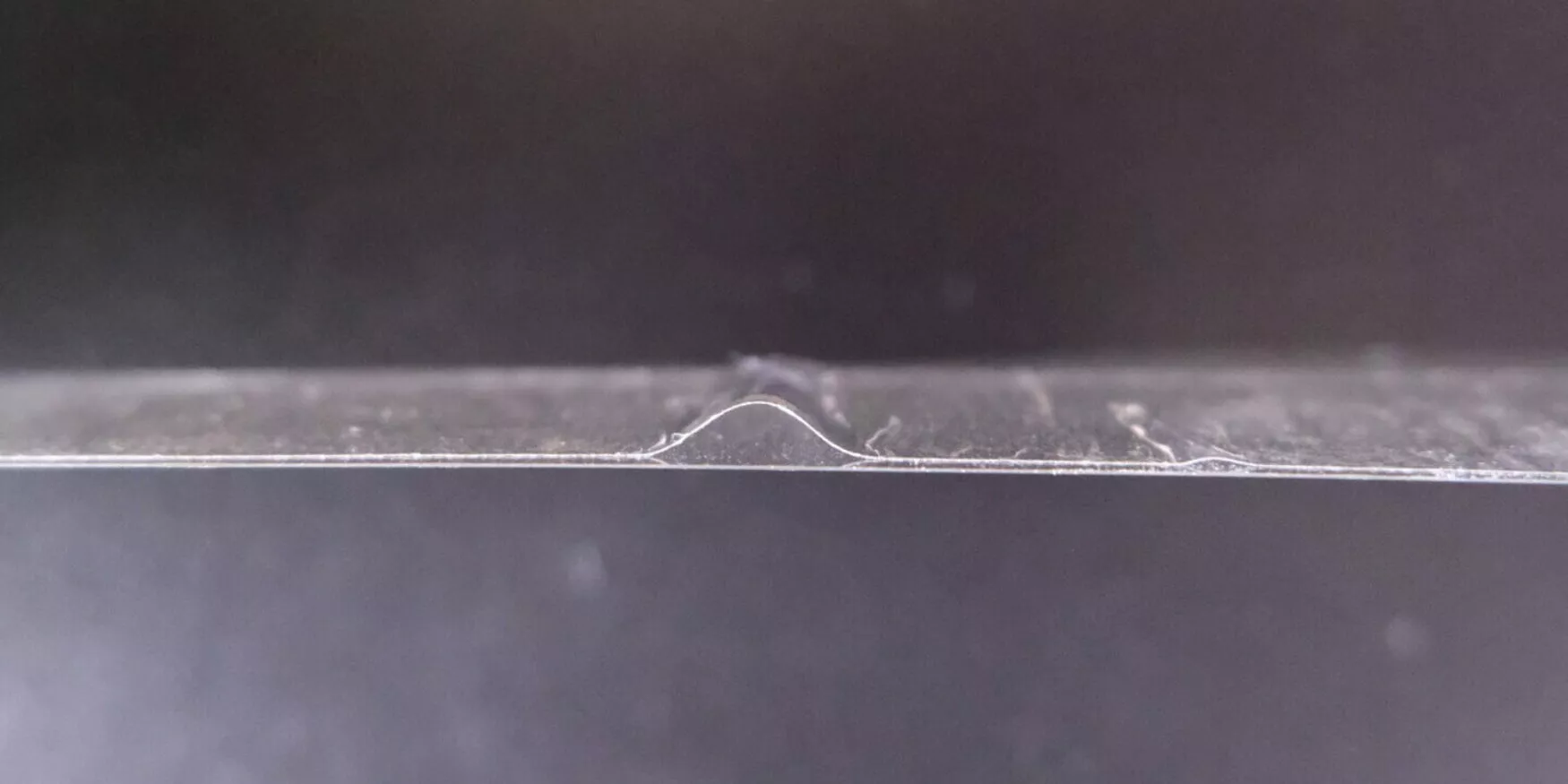Delamination of a multilayer material: influence of layer stiffness
Question
What is the origin of the delamination observed on a sample consisting of a stack of different polymer layers?
Preliminary observations during delamination tests (peeling) reveal an adhesion problem in one of the layers, made up of a thin polymer film a few microns thick.
The chemical composition having been checked and approved beforehand, the aim here is to measure the mechanical properties of this layer.
Expertise
MATERIA NOVA has extensive experience in the dynamic and static mechanical characterization of polymer materials.
One of the characteristics of polymers is that their elastic properties vary greatly with the temperature and frequency of mechanical stress to which they are subjected (viscoelasticity). For a given polymer, these properties depend not only on its composition and molecular weight, but also on the manufacturing process.
In this case study, the analyses were carried out dynamically using DMA (Dynamic Mechanical Analysis). This equipment can be used to measure the elastic and viscoelastic properties of materials under different modes of stress (tension, compression, 3-point bending, etc.), by varying the temperature and/or frequency of stress.
The aim here is to check whether a variation in the mechanical properties of the defective layer may be the cause of the observed defect. For this reason, the moduli of elasticity and loss factors (Delta tangent) of the defective polymer layer and a compliant material (with no adhesion problems) were compared.
Here, the specimens were subjected to tensile stress. The DMA analyses carried out on the two samples show that they do not have the same response to the applied stresses:
- the reference film (solid line) shows two main mechanical transitions over the frequency range tested (see arrows on graph), while the defective film (dotted line) shows only one, which is, moreover, quite weak (around 40 Hz).
For the reference fim, at around 0.4 Hz, the modulus increases by more than a decade. In other words, beyond this load frequency, the material becomes much stiffer when loaded. At around 40 Hz, the delta tangent rises sharply, indicating the development of a viscous phenomenon at this frequency (relaxation, creep, permanent deformation, delayed phenomenon).
- at low frequencies (< 0.4 Hz), the mechanical modulus (E') of the reference film (solid line) is lower than that of the defective film (dotted line). The difference is significant and greater than one decade. Thus, over this frequency range, the defective film is stiffer than the compliant film. Above 0.4 Hz, the two films have fairly similar mechanical moduli.
The main conclusion is that the films have different mechanical and viscoelastic properties: the defective film is very stiff over the entire load range, unlike the compliant film, which is softer and displays a viscous phenomenon at a certain frequency. This explains the non-conformities observed during quality control at the customer's premises.

Solution
The viscoelastic and mechanical properties of the defective film were evaluated using the DMA tool and compared with those of a compliant material. The difference in the response of the two samples to mechanical stress showed that the defective layer did indeed have altered mechanical properties, which explains the non-conformities observed by the customer.

